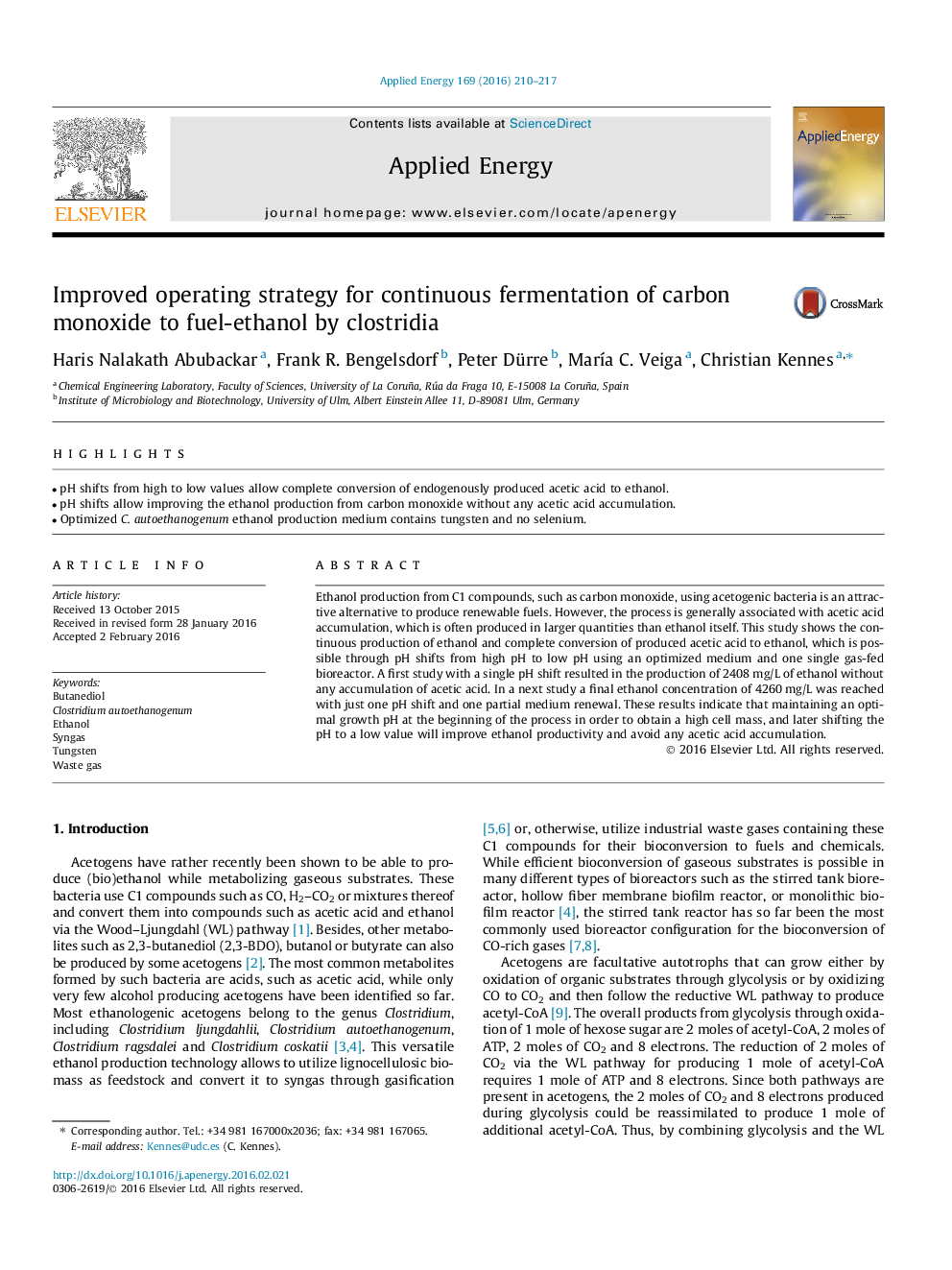| Article ID | Journal | Published Year | Pages | File Type |
|---|---|---|---|---|
| 6683471 | Applied Energy | 2016 | 8 Pages |
Abstract
Ethanol production from C1 compounds, such as carbon monoxide, using acetogenic bacteria is an attractive alternative to produce renewable fuels. However, the process is generally associated with acetic acid accumulation, which is often produced in larger quantities than ethanol itself. This study shows the continuous production of ethanol and complete conversion of produced acetic acid to ethanol, which is possible through pH shifts from high pH to low pH using an optimized medium and one single gas-fed bioreactor. A first study with a single pH shift resulted in the production of 2408Â mg/L of ethanol without any accumulation of acetic acid. In a next study a final ethanol concentration of 4260Â mg/L was reached with just one pH shift and one partial medium renewal. These results indicate that maintaining an optimal growth pH at the beginning of the process in order to obtain a high cell mass, and later shifting the pH to a low value will improve ethanol productivity and avoid any acetic acid accumulation.
Related Topics
Physical Sciences and Engineering
Energy
Energy Engineering and Power Technology
Authors
Haris Nalakath Abubackar, Frank R. Bengelsdorf, Peter Dürre, MarÃa C. Veiga, Christian Kennes,
